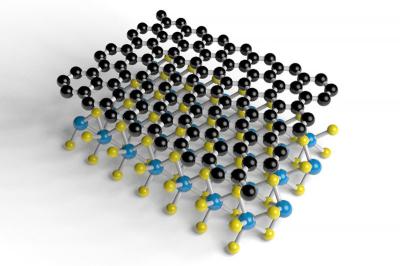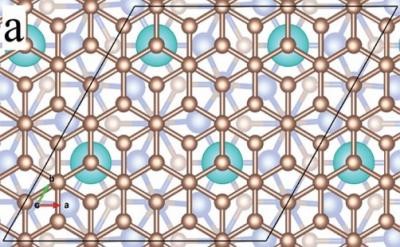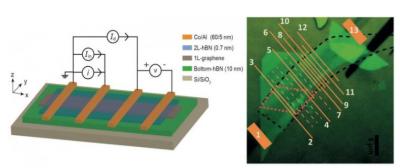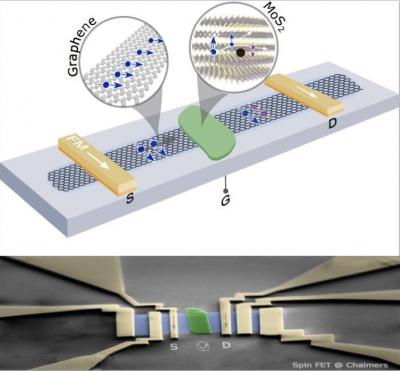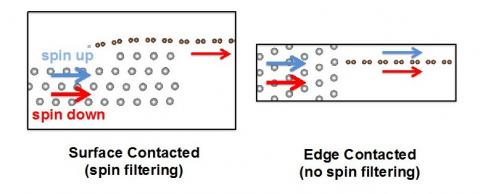US researchers designed an efficient graphene-based spintronics transistor
Researchers from the University of Nebraska-Lincoln designed a spintronics transistor that is based on graphene. The researchers say that such a device could be highly efficient, run at room temperature (and above) and feature a nonvolatile on-off current ratio and electrically controllable spin polarization.
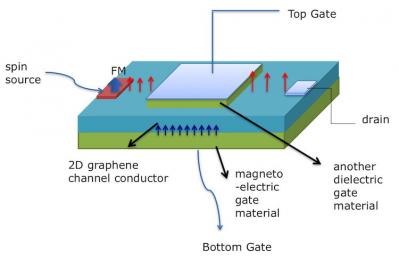
The device is based on the discovery that an external voltage can be used to control the magnetic properties of few-layer graphene interfaced with chromium oxide. This is a theoretical research at this stage but the new device structure is expected to feature a large electrically controllable spin current.
